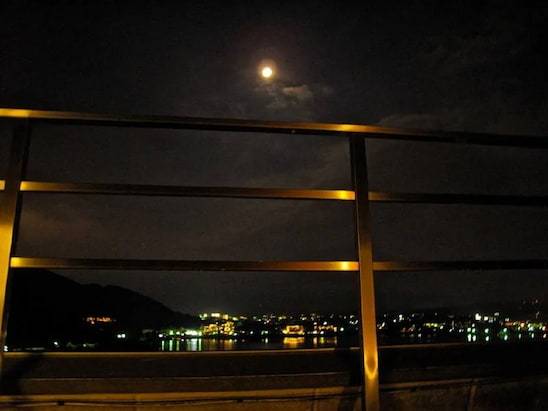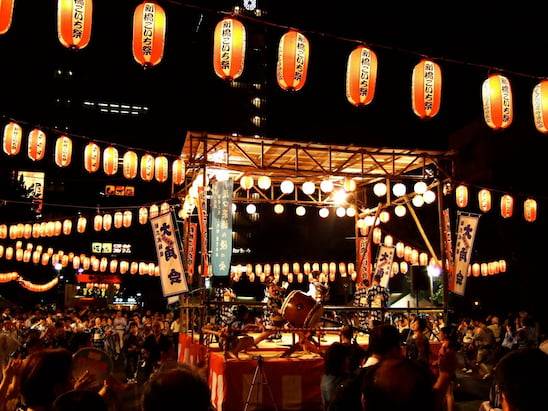Japanese festivals, culture and traditions have also become magnets to attract tourism to Japan. One of the Japanese traditions focused herein is the Japanese hot spring bath. As an island nation endowed with many volcanoes, Japan has many hot springs all over the country and this has spurred the hot spring bath tradition since hundreds of years ago.
The Top 10 of Japanese hot spring (or "onsen" in local language) are Kusatsu Onsen Gunma, Hakone Onsen Kanagawa, Yufui Onsen Oita, Kurokawa Onsen Kumamoto, Beppu Onsen Oita, Gero Onsen Gifu, Noboribetsu Onsen Hokkaido, Kinosaki Onsen Hyogo, Ibusaki Onsen Kagoshima and Dogo Onsen Ehime.
Taking a bath in the onsen said to be one of the reasons why many Japanese have excellent health and long life. Taking baths in a small tub is already a daily routine in Japanese homes. However, the difference between this and bathing in the onsen is that the onsen contains rich natural minerals that are beneficial for health, and also in regard to the customary tradition in taking an onsen bath.
Regrettably, many Muslim tourists visiting Japan tend to overlook the opportunity to try this interesting Japanese tradition. This is especially due to the traditional custom of hot spring bath in Japan that is perceived to be somewhat unique; it is a customary in Japan to partake in the onsen bath together with other people, even with strangers, without any bathing suit whatsoever. Indeed, this is the biggest challenge to us Muslim. Taking a communal bath in the nude is not our normal custom; moreover, it is not permissible according to Islamic law.
Nevertheless, as a Muslim, it is actually possible for us to try the sensation of Japanese hot spring bath. So how can we do that?
Some well-known onsens in Japan actually provide separate rooms to enjoy a private onsen bath experience. Since these private onsen cabins are separated from the main public one, visitors can enjoy a nice onsen bath experience without mixing with other patrons and away from prying eyes.
In these private onsen facilities, the hot spring is usually contained in a large bathtub hence the shortcoming is that the private onsen rooms usually do not look quite natural, as they are indoors though there are exceptions to this. For most private onsens, private rooms can be booked by a family with a maximum of 3 family members, and children under the age of 10 years old. However, if the available hot spring tub is larger then more than 3 family members may be admitted.
Furthermore, there are two ways to try
hot spring baths at a Japanese onsen. You can stay at a Ryokan (Japanese traditional hotel) that provides onsen on site. Alternatively, you can come in as a walk-in customer, but you need to make sure beforehand whether the Onsen operators will accept walk-in guests.
Here are some of my personal experiences in Kinosaki Onsen and Hakone Onsen enjoying onsen bath as a Muslim traveller.
KINOSAKI ONSEN.

Another picture by Lili Lengkana at Kinosaki Onsen during Sakura Season
Kinosaki-shi is a favourite place for Japanese people and also visiting tourists to enjoy this healthy onsen bath. I had a chance to visit it with my son to try the onsen experience. Since we were based in
Kyoto during our Japan
travel adventure whilst Kinosaki is located in the northwest of Tokyo, so we had to take a train to reach there.
There are two onsens in Kinosaki that have private onsen facilities, which is Ichino-yu and Jizou-you. My son and I eventually chose Ichino-yu to try this experience. In this regard, I would like to remind you that it is actually better if you can make an appointment and book your onsen session one day in advance since you might not be able to try the private onsen if they were fully booked, especially in the holiday season.
Even though my son is my mahram, he was almost 9 years old at that time and the awrah of a Muslimah have to be covered, so I decided to use a Muslimah bathing suit when I use the onsen tub. As the rules of onsen mention that clothing is not allowed in the tub so please do so at your own discretion. The onsen is closed and private for us during our session so we did not have to worry about being bothered by the onsen staff. Do make sure, however, to wash first before you soak into the onsen tub.
HAKONE ONSEN

View at daytime at one of Ryokan at Hakone Onsen area that I stayed
The onsens in Hakone have a very beautiful scenery as the onsens there are located in the ryokans encircling Lake Hakone with Mount Fuji in the background. Most of the ryokans here have private onsen facilities, with many of them located outdoor on the roof of the hotel.
During our trip, My family and I stayed at one of the ryokans on the hill that has private onsen tub outdoor on the roof, yet the ryokan is secluded enough so that these private onsen tubs are still be protected from public view. The advantage of having the private onsen on the roof is obviously the scenery. Whilst soaking in the onsen tub we can enjoy a spectacular view of Lake Hakone and Mount Fuji, which is an unforgettable experience. In the night time, you can enjoy the romantic view of the moon and stars.
Even though the private onsen is located outdoor, you won't have to worry about the privacy as these ryokans have designed their private onsen in such a way that they will still be hidden from the view of the public. If you willing to spend more money, you can try booking a Ryokan with private onsens inside your room so you can enjoy the bath experience with the whole family freely.
You can also do an online search of all ryokans that have private onsen facility. It will be a big miss if we travel to Japan without experiencing the sensation of Japanese onsen bath.
 Viet at night time from my Onsen bath point of view with a Fuji Yama and Lake Hakone as a back drop.
Viet at night time from my Onsen bath point of view with a Fuji Yama and Lake Hakone as a back drop.
You can also do an online search of all ryokans that have private onsen facility. It will be a big miss if we travel to Japan without experiencing the sensation of Japanese onsen bath.
Important things to note:
- It is advisable to bring your own towel if you are a walk-in guest to the onsen. Otherwise, you will be charged to rent a towel, which can go for JPY 300 on top of the onsen ticket price.
- The rate for 40-minute private onsen session in Ichino-yu is JPY 3,000 for a maximum of 3 persons.
- If you are trying natural onsen for the first time, you have to be very careful as the average temperature for natural onsen is 59 degrees Celcius, which is very hot for most of us. Therefore, please refrain from jumping straight into the tub; you can also ask the onsen staff to add cold water to the tub to cool down the temperature. We advise a temperature of 49 degrees Celcius for those trying natural onsen for the first time. Though your body has to be adapted to the temperature of the water; when you have soaked in it for a couple of minutes you will get a wonderful and unforgettable feeling.
- Make sure you clean yourself (and your bathing suit) properly (by taking a full complete bath) before soaking into the onsen tub (and after your session obviously). Don't worry about bringing the soap and shampoo; they are already provided to you free of charge.
- It is not advisable for Muslimah to go into the Ladies only public onsen as wearing clothing ( bathing suits included) is not allowed in most onsens. Hence booking private onsens could prove to be the better option.
- You can travel by local train or by JR Line all over Japan to go to your onsen destination. You can buy tourist 1 day, 5 days or monthly ticket that either includes Shinkansen (bullet train) or normal JR Line train.
- Lastly, be sure to check which train would take to your destination, the train schedules and even which station track you will be using.





